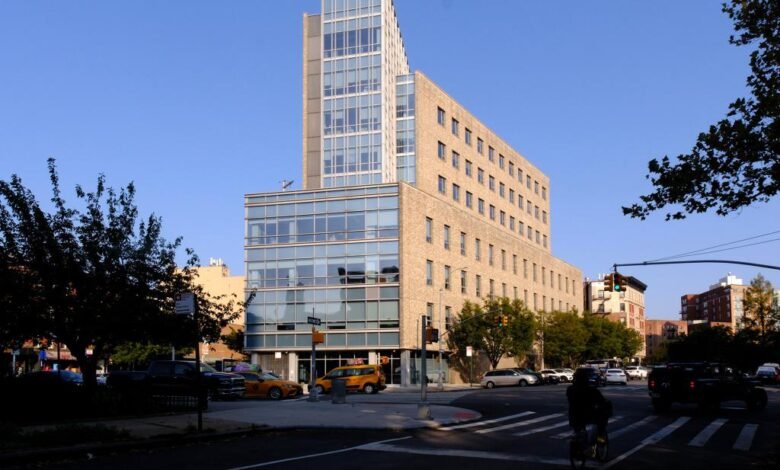Legionnaires’ Outbreak: A Shocking Testament to Our Fecklessness…

Lessons from Legionnaires’ Disease: A Call to Action Against Public Health Negligence
The recent outbreak of Legionnaires’ disease serves as a distressing reminder of the critical importance of public health vigilance and effective response strategies. As urban areas grow and infrastructure ages, the threat posed by infectious diseases—notably Legionnaires’ disease—becomes increasingly significant. This blog aims to explore the factors contributing to the outbreak and the failings of health departments in addressing this public health crisis.
Understanding Legionnaires’ Disease
Legionnaires’ disease is a severe form of pneumonia caused by the Legionella bacteria, typically found in warm water environments such as cooling towers, hot tubs, and large plumbing systems. The disease is transmitted through inhalation of water mist containing the bacteria, which means that individuals can become ill without ever coming into direct contact with contaminated water. Symptoms often resemble those of other types of pneumonia, including cough, fever, and difficulty breathing, making diagnosis challenging.
Recent Outbreaks: A Growing Concern
Taking stock of recent incidents, various regions across the United States have reported cases of Legionnaires’ disease, highlighting the issues surrounding detection, reporting, and management of outbreaks. Health departments have received criticism for their slow response times and lack of effective communication, leading many to question the adequacy of existing public health protocols. Moreover, these outbreaks are not isolated incidents; they are symptomatic of a broader public health crisis that calls for urgent and decisive actions.
The Role of Aging Infrastructure
One of the primary factors contributing to the emergence of Legionnaires’ disease is the aging infrastructure of buildings and water systems. Many cities feature outdated plumbing that has not been updated in decades, which poses a significant risk for waterborne bacteria to thrive. Neglected cooling towers and other water systems can become breeding grounds for Legionella, fostering conditions ripe for outbreaks.
The American Society of Civil Engineers reports that a substantial percentage of the nation’s water infrastructure requires urgent repair or replacement. As municipalities grapple with limited funding and resources, the prioritization of public health infrastructure often falls by the wayside. This negligence can often lead to tragic consequences, as seen in various recent outbreaks.
Inadequate Monitoring and Reporting
Another crucial factor in the persistence of Legionnaires’ disease is the inadequacy in monitoring and reporting systems employed by health departments. Often, there is a lack of comprehensive tracking of cases, which can lead to a delay in identifying trends and potential outbreaks. The failure to quickly pinpoint the source of contamination can prolong exposure risks to the general public.
Similarly, public awareness of Legionnaires’ disease remains relatively low. Without awareness campaigns, residents may not recognize symptoms, potentially delaying diagnosis and treatment. The responsibility lies with health departments to not only track but also educate the public about preventive measures and symptoms of the disease. A failure in this regard reflects a broader systemic issue within public health frameworks.
The Consequences of Inaction
The consequences of neglecting the threat of Legionnaires’ disease are dire. Without swift and effective action, communities can experience widespread outbreaks, leading to serious illness and even fatalities. Notable outbreaks in places such as Detroit and New York City tragically highlight these realities, where inadequate health responses have resulted in preventable deaths and illnesses. The loss of life due to Legionnaires’ disease underlines the necessity of remedial action within the public health sector.
A Call to Action: What Needs to Change?
Invest in Infrastructure
To mitigate the risk of Legionnaires’ disease and other waterborne illnesses, substantial investment in modernizing water infrastructure must be prioritized. Cities must find funding mechanisms, whether through federal aid, grants, or public-private partnerships, that would enable them to update plumbing and cooling systems effectively.
Enhance Surveillance Systems
Health departments need to improve their surveillance systems to ensure that cases of Legionnaires’ disease are reported and tracked accurately and efficiently. This includes using advanced technology to analyze trends in real time, enabling quicker responses to potential outbreaks. Utilizing data analytics can help in predicting and responding to future outbreaks effectively.
Public Education Campaigns
Another prerequisite for avoiding future outbreaks is intensive public education about Legionnaires’ disease. People need to be aware of the symptoms, transmission methods, and preventive measures to help avert potential infections. Public health announcements, educational workshops, and engaging community programs can raise awareness and promote proactive health measures.
Inter-Agency Collaboration
Effective management of Legionnaires’ disease will require collaboration across various health departments, building management entities, and community organizations. Sharing information, resources, and best practices can ensure a more comprehensive approach to both prevention and response. Synergy among these entities can lead to more robust health interventions and a collective commitment to public safety.
Conclusion
The recent surge in Legionnaires’ disease incidents presents a clarion call for health departments and local governments to become actively engaged in creating safer public environments. The intersection of aging infrastructure, inadequate monitoring, and lack of public awareness underscores the urgent need for change. As communities around the nation confront the realities posed by failing health systems, the lessons learned from this outbreak must galvanize action. With a commitment to improving infrastructure, enhancing communication, and fostering community awareness, we can take meaningful strides toward preventing this preventable disease from affecting future generations.
Summary
- Legionnaires’ disease is a serious illness stemming from Legionella bacteria commonly found in warm water environments.
- Recent outbreaks have highlighted systemic issues in public health responses and the need for better monitoring and education.
- Aging infrastructure, particularly outdated plumbing and cooling systems, poses significant risks of disease transmission.
- Investment in modernizing water infrastructure is crucial for preventing future outbreaks.
- Effective surveillance and tracking systems need to be enhanced for timely responses to outbreaks.
- Public education campaigns are vital for raising awareness and promoting preventive health measures.
- Collaboration among health agencies and community organizations is necessary for effective public health management.





